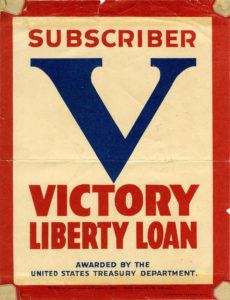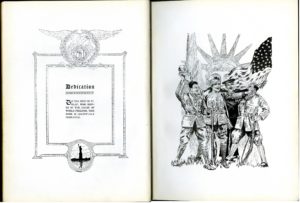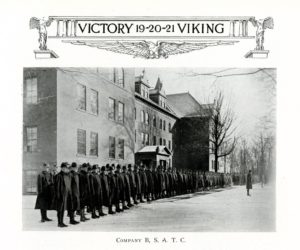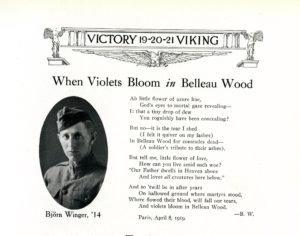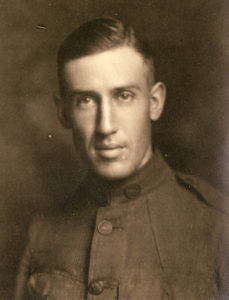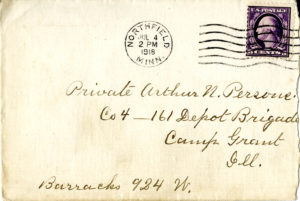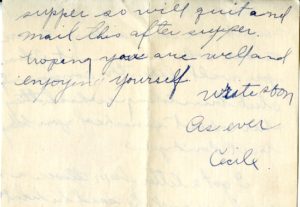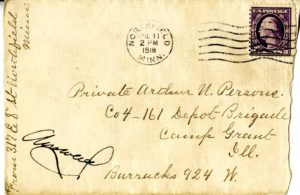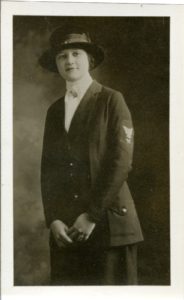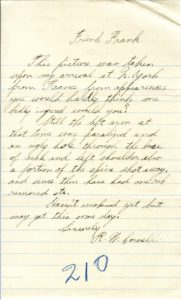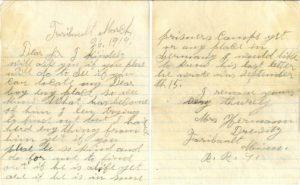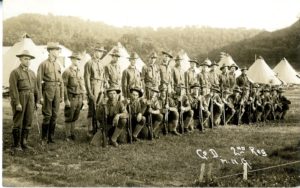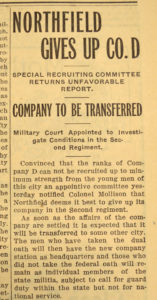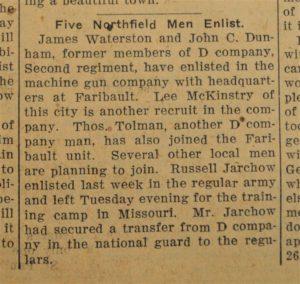Highlights of the World War I digitization project, part 1
Today I would like to share with you some of the great resources I have been able to digitize as a part of this World War I project.
One of our contributors, the Rice County Historical Society, is home to an amazing collection of World War I records created by the Rice County War Records Committee. This committee was formed while World War I was underway primarily to create a historical record of those who served in the war from Rice County. The RCHS’s collection includes a basic index of names for servicemen arranged by township or city, a huge ledger with double-sided pages for everyone who served, and individual soldier files – many of which include original induction cards, photographs, correspondence, and more.

Individual soldier file for Frank Paul Delesha of Faribault, Rice County Historical Society collection
Since the entire collection takes up two wooden four-drawer file cabinets, the Collaborative has decided to scan only the ledger book and a small selection of individual soldier files. We chose to include folders from soldiers who came from various Rice County cities, villages, and townships that contained unique stories. And what stories they tell!
In summary form, we can learn about the soldiers’ families, residences and occupation prior to service, military training, ranks and departments, stations and battles, whether or not they were injured or killed, and (in some cases) what they did after the war. As a whole, this digitized collection gives us all a very broad perspective on the variety of ways men (and some women) could serve in the military during this time.
Individually, we get snapshots of experiences that are fascinating on many levels, not only for war history buffs. Genealogists, family historians, social historians, and more can find something of interest in this collection.
For example, the record for Roy James Kallak includes a personal account of life in the United States Navy, written by Roy himself. Part of his job was to escort troopships across the Atlantic Ocean for service in the trenches. They were constantly on the lookout for enemy submarines hoping to torpedo the American soldiers. At the end of his account, Roy writes:
It may be well to add, in the interests of those Minnesota “Leather-Necks,” especially the Faribault boys who left New York with our convoy Oct. 13th 1918, that I have since learned…that the ship has been officially notified through the Navy Department, by information received from Germany, that that convoy was followed by a submarine for thirteen hours, it being unable to get a shot in because of the series of zig-zag courses we run [sic].
Thanks to Roy and his Navy crew, those Faribault boys crossed safely over the ocean.

Portrait of Roy Kallak, Rice County Historical Society collection




